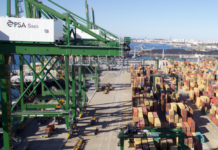Global fuel demand is showing some signs of improving although the market outlook is still quite bearish as a result of the coronavirus outbreak.
The MABUX World Bunker Index showed a slight upward evolution over the last seven days for all major types of bunker fuel. The 380 HSFO index was steady at US$301 – 302/mt, VLSFO was up US$11 to US$367/mt and MGO increased from US$435 to US$446/mt.

The price difference between 380 HSFOs and VLSFOs (the so-called Scrubber Spread (SS)) averaged US$57.06, an increase of approximately US$1 from the previous week. However, it is still at very low levels and this is the main reason that scrubber installations have decreased significantly from their peak period in March, according to Ship & Bunker.

“While pre-Covid-19 spreads of US$150-200/mt potentially offered a payback period of one or two years, spreads in the US$50-60/mt range now offer a stretch of four or five years until full payoff,” an analyst explained.
It should be noted that the SS indexes in Rotterdam and Singapore are almost equal now at US$74-75.

The stability of marine fuels available in the ARA (Amsterdam-Rotterdam-Antwerp) hub has deteriorated in the last months because of changing blend components and co-mingling. Co-mingling fuels of different origins can boost sediment levels, which make the blend unstable, and can form sludge, which can cause engine damage.
The spread between Singapore VLSFO (0.5% sulphur) and Rotterdam VLSFO (0.5% sulphur) fell to US$30.00/mt in the three weeks of July so far, from US$32.00/mt in June.

“The spread is still not wide enough to stimulate transportation of cargoes from Europe to Asia,” a MABUX spokesperson commented and added that the freight rates have dropped in the second half of June, but that did not help the supply of fuel to Asia to increase.
Meanehile, more than 500,000mt of HSFO is expected to flow from Singapore/Malaysia to the Red Sea for July loading to meet demand from power and desalination plants in Saudi Arabia.




